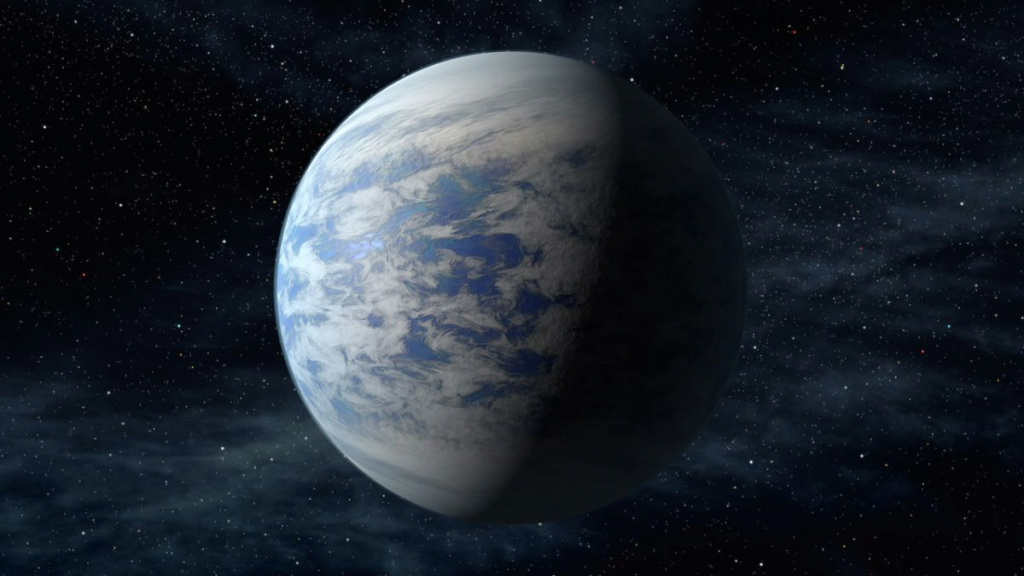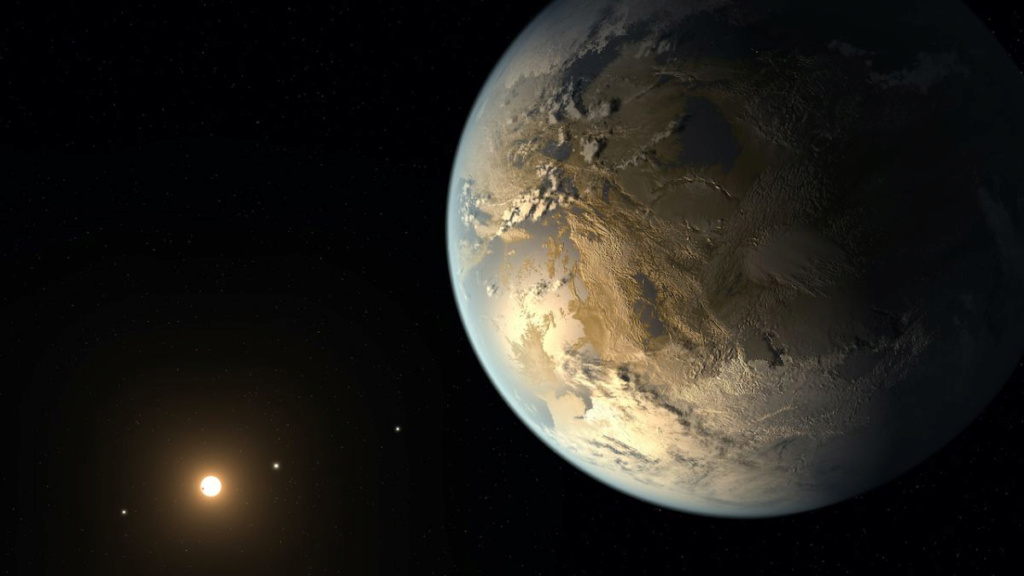Planets that may have more life than Earth

On Earth, the oceans and their various currents play an important role in supporting the phenomenon of life on the blue planet. What is the situation on planets outside our solar system? (CSE.com website)
The conclusion caught the experts by surprise
Scientists report that other worlds may be filled with more thriving forms of life than Earth. Therefore, the recent study conducted by these scientists may significantly affect the method we adopt to search for the presence of alien life. The study also indicates that life is more likely to be found on planets outside our solar system than we thought.
In the words of Dr. Stephanie Olson, the study's principal investigator, "It's a surprising finding... It shows us that conditions on some planets outside the solar system include the presence of oceans with major currents that follow certain patterns that favor the existence of life forms that may be more numerous." or activity compared to the living forms on the planet.
As a reminder, scientists have found in recent years huge numbers of planets moving outside the solar system, or worlds revolving around stars other than the sun, noting that the latter is the central star in our solar system. On the other hand, huge distances separate the Earth from the planets discovered outside the solar system, which means that it is impossible to reach them even with the help of the fastest space probes, and even it is difficult to see their details.

Based on this, researchers are working on a variety of means to identify these worlds, including making telescopes that will be able to explore the nature of the atmospheres of planets outside the solar system and learn more about their components and characteristics. However, to understand the data collected by the observatories, scientists need to build detailed and complex models that simulate how these planets formed and what their climate is like.
And by extension, combining these observations with models, scientists are looking forward to finding out which of these distant p For now, Dr. Olson and her team have accomplished that combination of observations and models to understand conditions on these exoplanets, which helps support the research. Olson and her team presented their findings at the Goldschmidt Conference on Chemical Geology in Barcelona.
lanets might be home to alien life.

Olson stated that “NASA’s quest to search for life in the universe focuses on what are called “planets in the habitable zone”, which means that they are worlds that are likely to have oceans of liquid water … but the oceans do not They are equally receptive to living forms, and some oceans will be better places to live than others because of the overall patterns of their currents."
In the course of conducting that study, the team made models of planets outside the solar system that are believed to be suitable for hosting living forms, by using NASA software that allows them to simulate the conditions in those worlds. NASA's techniques have also been used to create models of the climates and oceans in which they may exist.
Based on this, the team found that many of these planets appeared to be more habitable and thriving places than Earth. He also studied processes in the oceans of the blue planet that are known to allow life to take root on it, and assessed the extent to which the same processes might occur elsewhere in the universe.

In a statement on this matter, Dr. Olson explained, “Our research work sought to determine the type of oceans in exoplanets, which may be more qualified than others to host abundant and active numbers of living forms... Life in the oceans of the planet depends on currents.” The ascending water (upward flow) that returns nutrients from the dark depths to the sunlit parts of those water spaces where plants, algae and some types of bacteria live, as well as the process of photosynthesis or "chlorophyll" that converts sunlight into energy and food. And the more ascending water currents, the greater the resupply of nutrients, which means an increase in biological activity. These data constitute the conditions that we need to search for in the rotating planets outside the solar system."
In this regard, various models were made on these different planets, which enabled researchers to estimate the species that are likely to evolve and thus sustain life. They were surprised when they discovered that the Earth is not the best, but that there may be other worlds in the universe that are far better than it, so that life can begin on it.

In a similar vein, Olson says, they used a "modal ocean currents model" to determine which planets have upward water currents more efficiently than others, which in turn makes the oceans more hospitable to living forms. The vast land... is considered one of the factors that result in higher rates of ascending water currents.There is also another indication of this research, which is represented in the fact that the earth is not necessarily the most ideal place in terms of its suitability to host life on it... and the universe may contain other places in which there is a planet It is more hospitable than Earth, in being able to host living forms on it.”
Olson concluded, "Our work is important because the techniques we use have shown that we are unable to identify different aspects of the planets outside our solar system. There is certainly more life in the universe than we will always see, even with the most advanced telescopes and other equipment. This means that Scientists will always need to improve their studies by looking for planets that are easier for life to find a home in."
At another point in the same scene, Chris Reinhard of the Georgia Institute of Technology, a scientist who was not involved in the research, predicted that "the oceans will be an important component in organizing some of the most not well known, but quite impressive, signs of a planet's suitability to host planetesimals." On the other hand, our understanding of oceans on planets outside our solar system is still in its infancy, so Dr. Olson's work represents an important and significant step in advancing our understanding of the oceans of planets outside our solar system."
In turn, the research that Dr. Olson and her team have done can help us get a feel for how to build new telescopes, as we learn more about the types of planets we're best looking for. Dr. Olson summed it up by noting that "now that we know what to look for, we need to start looking."
Source: websites

